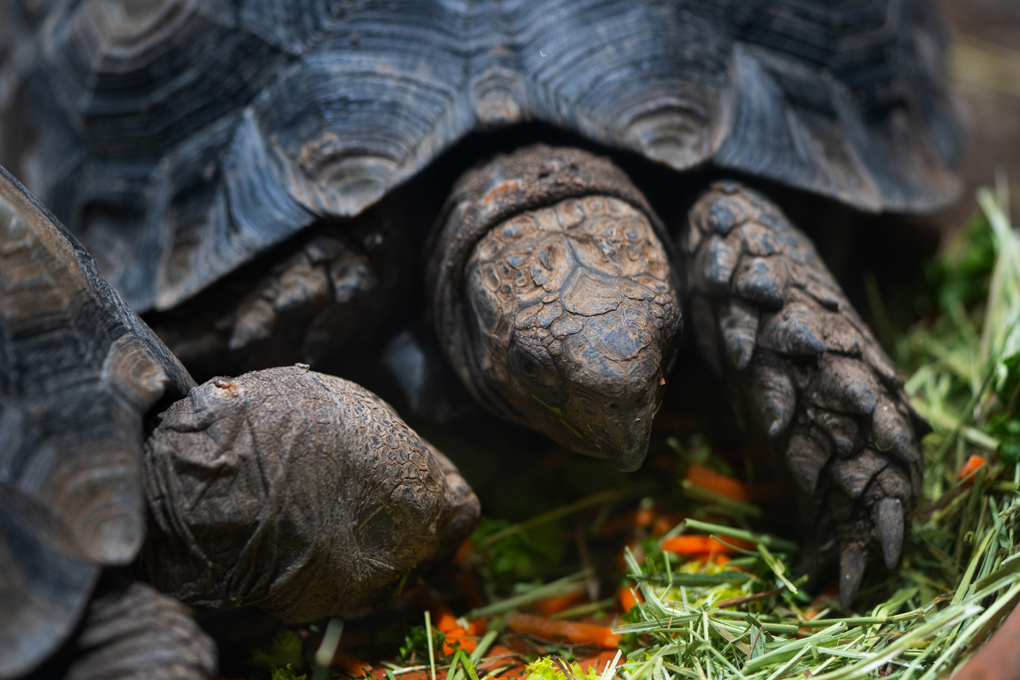Manouria emys
Fast Facts
- Many tortoise experts believe that these may be the oldest existing tortoise species.
- The Burmese mountain tortoise is known by sixteen different common names – Asian giant tortoise, Asian tortoise, black giant tortoise, Burmese brown tortoise, six-legged tortoise, and spur-thigh tortoise just to name a few.
- Fourth largest tortoise species in the world.
- Called the six-legged tortoise because the supracaudal scutes on the back of its shell resemble another set of legs.
- Females guard over the nest.


Range
Southeast Asia

Habitat
Highland tropical forests

Size
20-24 inches in length and up to 100 pounds

Nutrition
Vegetables, grasses, leaves, and fruits
Characteristics
The Burmese mountain tortoise is the largest tortoise inhabiting Asia. Their defining characteristic is their spiny, divided supracaudal scutes (scales on the tail end). The carapace is heavily domed and rounded with well-defined flared scutes on the outer edge. The head is boxy with a prominent beak and the front legs have large spur-like scales. They vary in color from brown to black. Like all tortoises, males tend to have longer, thicker tails than those of females.
Behavior
The Burmese mountain tortoise moves very slowly, even when threatened. The species is most active during twilight or during the day if the temperature is not too high. If the climate is too warm, they may burrow into damp soil and leaf litter. They are also found soaking in pools and small streams.
Reproduction
During courtship, males head-bob to communicate with prospective mates. The two types of head bobbing are horizontal and elevated bobbing. Fixation is another courting behavior performed by males. Males fully extend their head and neck, keeping it pointed toward the female as she moves about.

